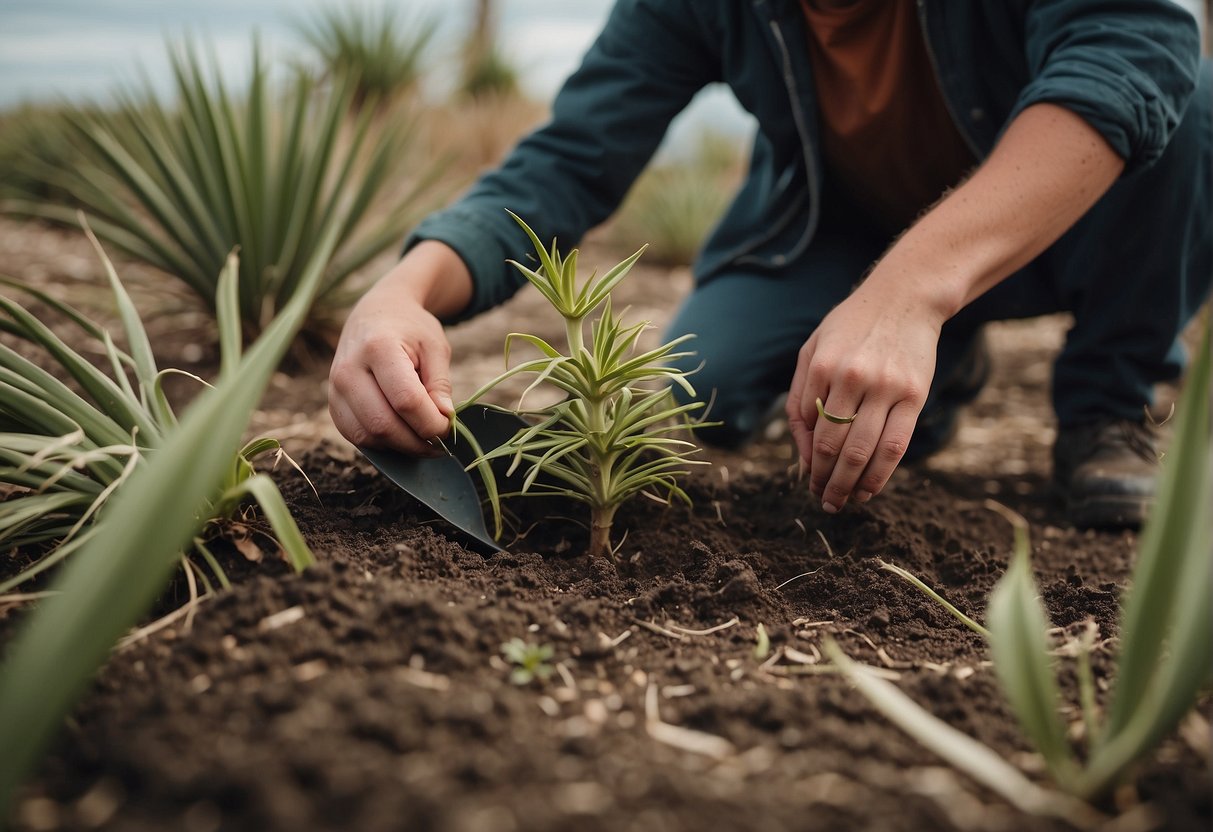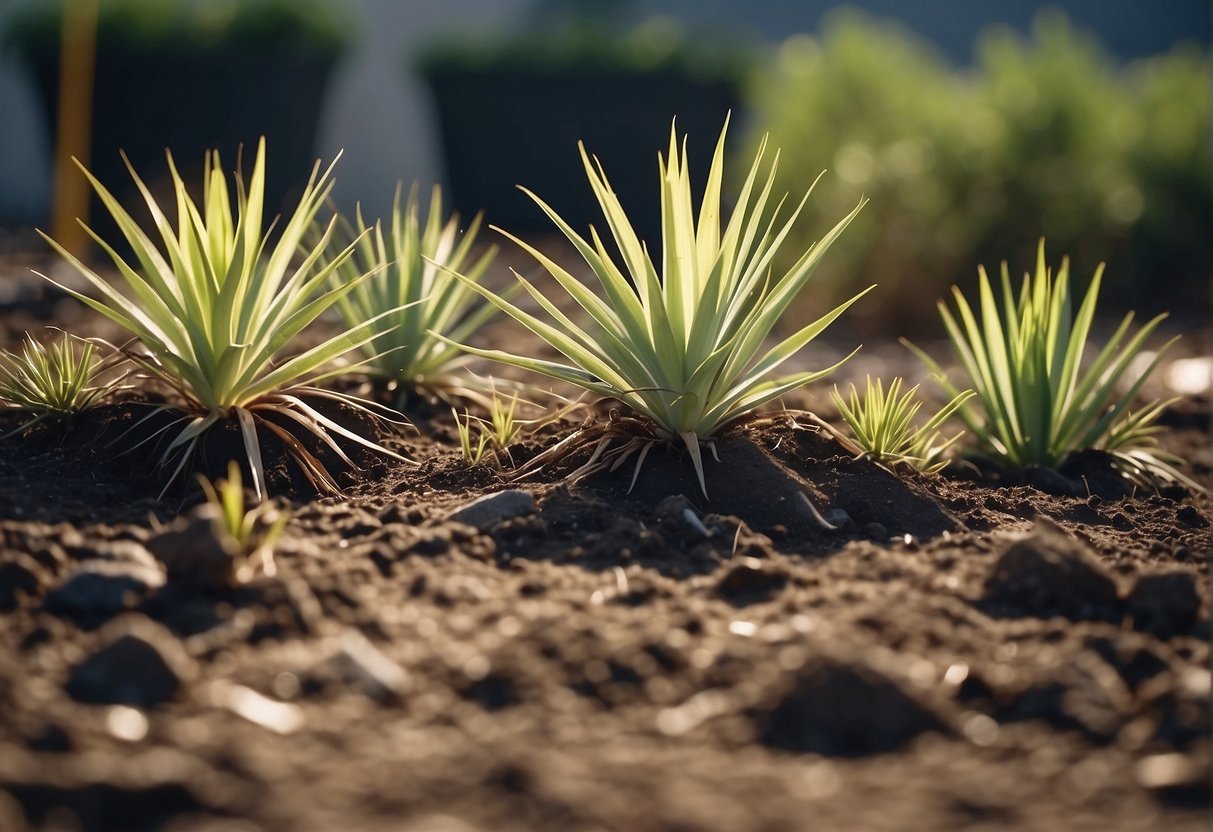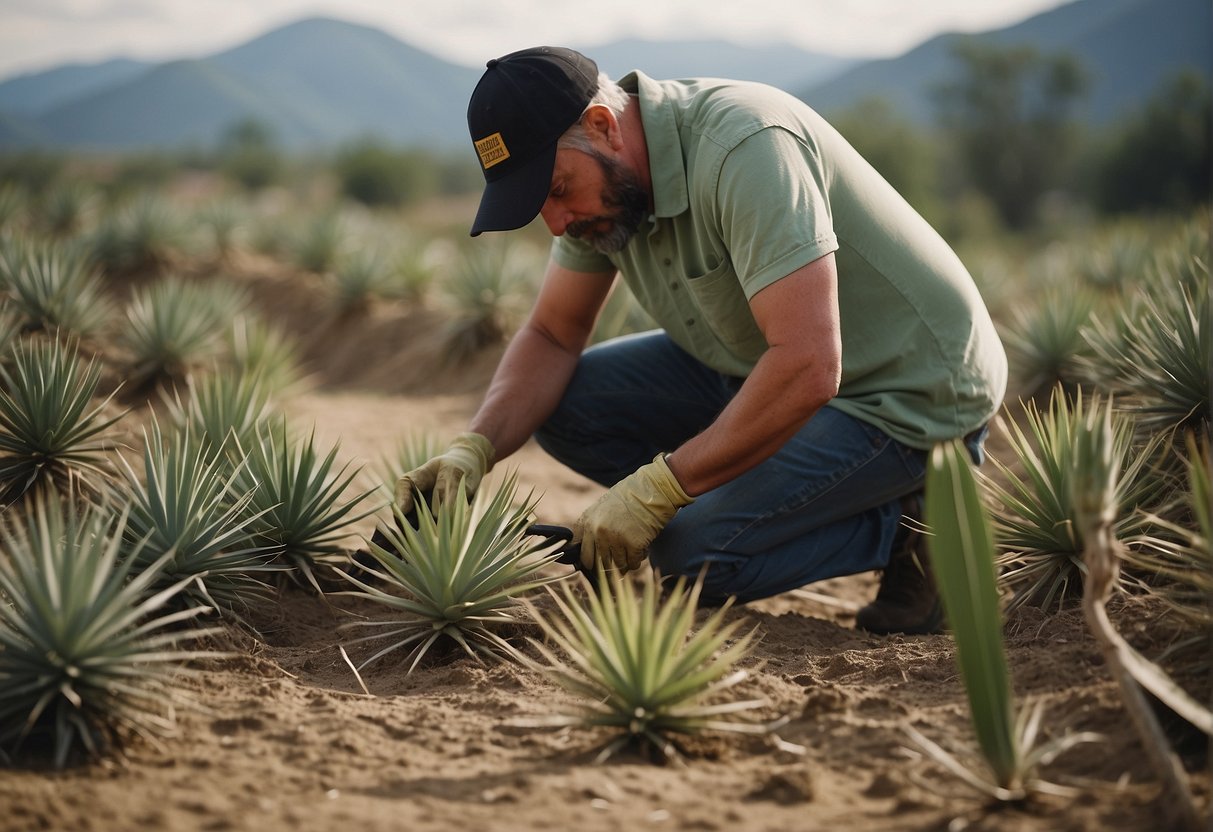How to Get Rid of Yucca Plants for Good: A Clear Guide
If you’ve ever attempted to eliminate yucca plants, then you’re aware of their tenacious and enduring nature. These plants are characterized by their pointed leaves and resilient root systems, making their extraction quite the formidable endeavor. Nevertheless, by employing the optimal strategy, you can effectively eliminate yucca plants once and for all.

To start, it’s important to understand the nature of yucca plants. These plants are native to arid regions and have adapted to survive in harsh conditions. As a result, they have developed a deep root system that can be difficult to remove. Additionally, yucca plants are known for their ability to regrow from even a small piece of root or stem, making it important to thoroughly remove all parts of the plant.
With these challenges in mind, it’s important to take a comprehensive approach to yucca plant removal. This may involve physical removal, chemical treatments, or a combination of both. By following the right steps and being persistent in your efforts, you can successfully get rid of yucca plants and prevent them from regrowing in the future.
Key Takeaways
- Understanding the nature of yucca plants is key to successful removal.
- Thorough physical removal and/or chemical treatments may be necessary.
- Persistence is key to preventing regrowth and ensuring long-term success.
Understanding Yucca Plants
Yucca plants are a type of perennial plant that are known for their sword-shaped leaves and extensive root system. They are also drought-tolerant and grow rapidly, making them a popular choice for landscaping and gardening. However, their rapid growth and invasive nature can make them difficult to control and get rid of.
Characteristics of Yucca
Yucca plants are native to arid regions of North and Central America, and are characterized by their long, stiff leaves that grow in a rosette pattern. The leaves are typically green or blue-green in color and can grow up to several feet in length. Yucca plants also produce tall, spiky flowers that can reach up to 10 feet in height.
Why Yucca Plants Can Be Invasive
One of the main reasons why yucca plants can be invasive is their extensive root system. Yucca plants have long, thick roots that can grow deep into the soil and spread out over a wide area. This can make them difficult to control and remove, as even small pieces of root left behind can sprout new plants.
In addition, yucca plants are very hardy and can tolerate a wide range of growing conditions. They are drought-tolerant and can survive in hot, dry climates, as well as in cooler, wetter areas. This makes them well-suited to many different types of environments, and allows them to grow rapidly and compete with other plants for resources.
Overall, understanding the characteristics and behavior of yucca plants is key to effectively controlling and removing them from your landscape or garden. By taking the time to learn about these plants and their habits, you can develop a plan of action that will help you get rid of yucca plants for good.
Preparation for Removal

Before you start removing yucca plants from your yard, it is important to take some safety measures and gather the necessary tools and materials.
Safety Measures
Yucca plants have sharp leaves that can cause injury, so it is important to wear protective gear while removing them. Wear gloves and protective clothing to prevent cuts and scratches.
Additionally, yucca plants can be difficult to remove, so it is important to take your time and avoid rushing. Be careful when using tools and equipment to prevent accidents.
Tools and Materials Needed
To remove yucca plants, you will need the following tools and materials:
- Saw or pruning shears: Use a saw or pruning shears to cut through the thick stems and roots of the yucca plant.
- Shovel or spade: Use a shovel or spade to dig around the base of the plant and loosen the soil.
- Protective gear: Wear gloves and protective clothing to prevent injury.
- Trash bags: Use trash bags to dispose of the yucca plant and its roots.
By taking these safety measures and gathering the necessary tools and materials, you will be well-prepared to remove yucca plants from your yard.
Physical Removal of Yucca Plants

If you have decided to remove yucca plants from your garden, physical removal is one of the most effective ways to get rid of them. This method involves digging out the yucca plant and disposing of it properly. Here are the steps to follow:
Digging Out the Yucca
-
Dig around the base of the yucca plant with a shovel or spade. Make sure to dig deep enough to reach the root system.
-
Loosen the soil around the root ball by gently prying it with the shovel or spade. This will help you remove the plant without damaging the roots.
-
Once the root ball is loose, carefully pull the plant out of the ground. You may need to use a little force, but be careful not to break the stem or damage the roots.
-
If the yucca plant has a stump, use a saw or pruning shears to cut it as close to the ground as possible. This will make it easier to dispose of the plant.
Disposing of the Yucca Plant
-
You can dispose of the yucca plant in a few different ways. If you have a compost pile, you can add the plant to it. Yucca plants are rich in nutrients and will decompose quickly.
-
If you don’t have a compost pile, you can dispose of the plant in your yard waste bin. Check with your local waste management company to see if they accept yucca plants.
-
If you have a large amount of yucca plants to dispose of, you may need to rent a dumpster or hire a waste removal company.
By following these steps, you can effectively remove yucca plants from your garden. Remember to dispose of the plant properly to prevent it from regrowing or spreading to other areas of your yard.
Chemical and Natural Methods to Prevent Regrowth
Using Herbicides
If you want to get rid of yucca plants for good, using herbicides can be an effective method. Glyphosate and triclopyr are popular herbicides that can be used to kill yucca plants. Roundup is a common brand of glyphosate herbicide that can be found at most home improvement stores. Triclopyr is another herbicide that can be found in brands such as Brush-B-Gon and Garlon 4.
When using herbicides, it’s important to follow the instructions on the label carefully to avoid any harm to yourself or the environment. You should also wear protective clothing and gloves when applying herbicides to avoid skin contact.
Natural Alternatives
If you prefer a natural approach to getting rid of yucca plants, there are several options available. Salt is a common natural alternative that can be used to kill yucca plants. You can sprinkle salt around the base of the plant or mix it with water and spray it directly on the plant.
Mulch is another natural option that can be used to prevent regrowth of yucca plants. By covering the area around the plant with a thick layer of mulch, you can prevent sunlight from reaching the roots and prevent regrowth.
Vinegar and Epsom salt are also natural alternatives that can be used to kill yucca plants. A mixture of vinegar and Epsom salt can be sprayed directly on the plant to kill it.
When using natural alternatives, it’s important to keep in mind that they may not be as effective as herbicides and may require multiple applications. Additionally, natural alternatives may harm other plants in the area, so it’s important to be careful when applying them.
Overall, whether you choose to use herbicides or natural alternatives, it’s important to take the necessary precautions to prevent harm to yourself and the environment. By following the instructions carefully and taking the proper safety measures, you can effectively get rid of yucca plants for good.
Frequently Asked Questions
What methods are effective for removing yucca plants permanently?
To permanently remove yucca plants, the most effective method is to dig out the entire root system. This can be done by using a shovel or a backhoe to dig around the plant and remove as much of the root system as possible. Another effective method is to use a stump grinder to grind the root system down to below ground level.
Can natural remedies be used to eliminate yucca plants, and if so, which are most effective?
Yes, natural remedies can be used to eliminate yucca plants. One effective method is to pour boiling water over the plant and root system, which will kill the plant. Another method is to use a mixture of vinegar and salt, which can also be effective in killing the plant.
What is the best way to ensure yucca plants do not regrow after removal?
To ensure that yucca plants do not regrow after removal, it is important to remove as much of the root system as possible. It is also helpful to apply a herbicide to the remaining root system to kill any remaining roots.
Which herbicides are known to be effective in killing yucca plants, and how should they be applied?
Herbicides that contain glyphosate or triclopyr are known to be effective in killing yucca plants. These herbicides should be applied directly to the plant and root system according to the instructions on the label.
How can one safely remove and dispose of large yucca plants and their root systems?
To safely remove and dispose of large yucca plants and their root systems, it is recommended to hire a professional tree removal service. They will have the necessary equipment and expertise to safely remove the plant and dispose of the debris.
Are household items like bleach or vinegar effective in killing yucca roots, and what are the application guidelines?
Household items like bleach or vinegar can be effective in killing yucca roots, but they should be used with caution. Bleach should be diluted with water before application, and vinegar should be applied directly to the root system. However, it is important to note that these methods may not be as effective as other removal methods.


